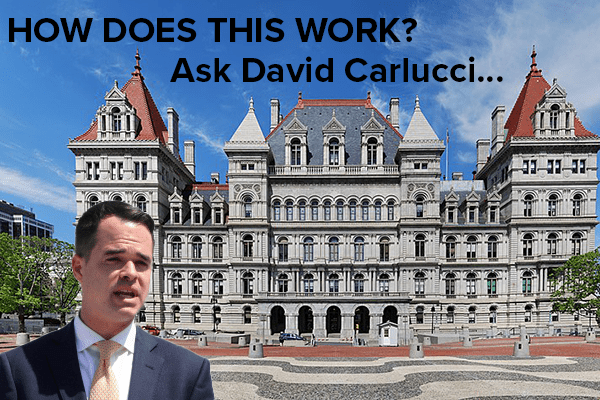|
RCBJ-Audible (Listen For Free)
|
New York Has Activated 988 services For All 62 Counties; Connects Callers Who Are Experiencing Mental Health Crisis With Trained Counselors
By David Carlucci
What is 988?
Despite being only three digits, 988 will save hundreds upon thousands of lives across the United States. 988 is the designated 24/7 number for mental health and substance abuse crises currently being implemented in 50 states.
The universal number connects individuals to one of more than 200 988 Suicide & Crisis Lifeline call centers across the country through call, text, or webchat. On the other end of the line, trained mental health counselors provide callers emotional support and local mental health resources if needed.
On July 16th, New York activated 988 services for all 62 counties. Anyone with a New York state area code can now access the 988 Suicide and Crisis Lifeline by dialing the three-digit number.
Governor Kathy Hochul championed the launch saying, “Connecting people who are experiencing a mental health crisis or considering suicide to trained counselors can significantly help them through difficulties that seem insurmountable, and the National Suicide Prevention Lifeline provides hope and support to those who need it most. By implementing 988, we are providing these individuals and their families and friends an easy-to-remember number that will give them access to the services they need.”
The History of 988
In 2005, the Substance Abuse and Mental Health Services Administration’s (SAMHSA) Center for Mental Health Services launched the National Suicide Hotline as part of its National Suicide Prevention Initiative. At the time, the Lifeline had only 109 call centers within just 48 states. Yet, within less than ten years of operation, the Lifeline gained 55 additional crisis centers, covering every state.
Before 988, individuals would call the Lifeline at 1-800-273-8255, the 2018 National Suicide Hotline Improvement Act began the Lifeline’s transition away from the 1-800 number in order to streamline care for those in crisis. The law directed the Federal Communications Commission (FCC) to study the practicality of a designated three-digit number for the Lifeline. Through this study, the FCC determined 988 to be an effective alternative to the 1-800 number and created rules to prepare for a July 16, 2022 launch.
In 2020, Congress passed the 2020 National Suicide Hotline Designation Act, directing the FCC to implement 988 as the universal mental health and suicide prevention hotline. At this time, Lifeline had received over 20 million phone calls since its inception in 2005.
So, is 988 the “911 for mental health”?
911 currently exists as the main emergency response system. Despite the similarities at first glance, 988 will carry out mental health crises differently from 911. Law enforcement intervention has proven inefficient and dangerous for mental health 911 calls. In June of 2019, police officers shot and killed 23-year-old Miles Hall, a Black man facing a history of mental health issues, minutes after arriving at his home in Walnut Creek, California.
Despite Hall’s grandmother warning police about Hall’s mental health issues, officers failed to properly de-escalate the situation – leading to Miles’s death. Unlike 911, 988 distress calls are facilitated by licensed mental health counselors and peer specialists. 988 makes it safer for those in crisis by replacing armed officers with licensed and experienced officials.
988 will save lives.
Suicide is a leading cause of death in the United States. In 2020 alone, 45,979 people committed suicide – more than the recorded number of car crash fatalities. That year, 2.4 million phone calls were made to the Lifeline – the greatest number of calls since the data was tracked in 2005.
Like mental health, substance abuse and overdoses are reaching an all-time high in the US. Between the years 2020 and 2021, 40.3 million Americans ages 12 and older had a substance abuse disorder, according to the US Substance Abuse Health Services Administration. Out of the 40 million, 1 in 10 sought out treatment for their addiction. The CDC recorded over 110,000 drug overdoses in 2021 alone.
Having a standardized three-digit number will expand the availability and accessibility of mental health resources and reduce the stigma surrounding mental health and mental health services. 988 will coordinate trained mental health professionals with individuals who need direct, proper care. Now with 988 and federal grants, 988 is predicted to receive four times the calls than the National Suicide Prevention Lifeline in years past – meaning four times the lives saved.
How has New York state implemented 988?
Following the FCC’s recommendation of 988, the New York state government acted fast to implement the foundation for a successful launch in 2022. The Office of Mental Health established the 988 Planning Coalition, a collaborative group of diverse community stakeholders working towards a smooth rollout of 988 across the state. The Coalition focused on four subgroups of preparative action: linking 911 to 988, call center operations, marketing, and regional planning.
Funding is always an area of interest for new government programs, but New York has received and reserved enough resources to prepare for the launch of 988. As part of the two-year implementation plan, the state has allocated $35 million for the 2022-2023 fiscal year and an increased $60 million for 2023-2024. At the moment, New York has 13 reestablished crisis centers, with two in North County and Capital Region on the way. The initial 988 funds will be directed towards expanding the current centers and building new ones. Furthermore, New York has received over $17 million in federal grant money for expanding the capacity of crisis centers.
What’s next?
Many states have not implemented robust plans like New York, so a smooth forecast is not predicted nationwide. Yet, if state legislatures take charge and focus on establishing 988, services may be fully functional within the year – saving many more lives across the country.
In the near future, New York aims to continue support for 988 services through the current 13 crisis centers. With federal grants and the state budget, two more centers will be activated in North County and Capital Region.
As 988 support continues across the country, many individuals will be able to obtain accessible care for their mental health crises. Thousands of lives will be saved – just this year, thanks to 988. Soon, 988 will become just as conventional as 911, and the stigma surrounding mental health will decrease. All of this comes from strong state support and the skillful efforts of mental health counselors.
David Carlucci consults organizations on navigating government and securing funding. He served for ten years in the New York Senate.













